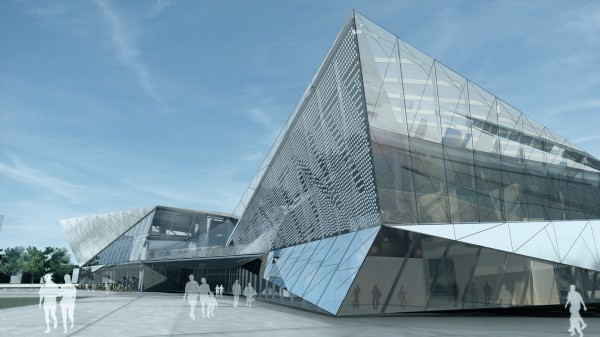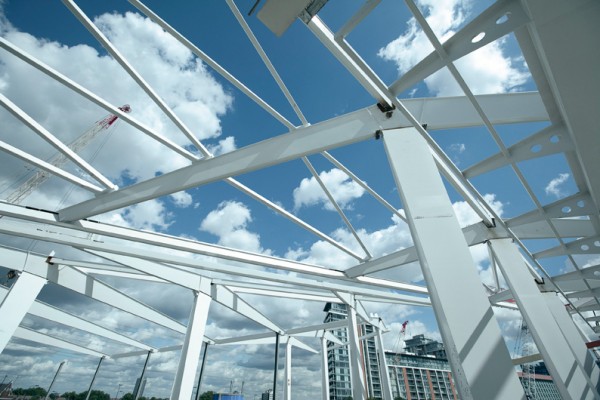The London borough of Newham has a lot going on right now. Not only is it the location of the bulk of the Olympic Park, it will, as of September, be home to what has been characterized as one of the most sustainable buildings in the world. The Crystal, as its known, was developed by Siemens — that global powerhouse in renewable energy tech, among other things — for the center of London’s new Green Enterprise District.
Conceived of as an ‘intelligent all electric’ building, it will serve as a showcase for innovative tech running the gamut from solar power arrays (which cover the roof of the building) to ground source heat pumps tied to geothermal wells (buried beneath the building site). As you might imagine, the development also showcases sustainable building technologies from the Siemens’ Environmental Portfolio — “the largest and most comprehensive in the world.” The Crystal was designed to take top marks in both LEED and BREEAM certifications; no fossil fuels will be used to power the building.

Like many green buildings, The Crystal will capture rainwater for reuse. Unlike many green buildings, it will not only use this water for non-potable applications — such as flushing toilets — it will filter that water on site for drinking water. Other uses for captured rainwater include solar thermal heating and on-site sewage treatment.
That’s right, on-site sewage treatment, as per the stringent terms of the Living Buildings Challenge. Clearly, Siemens is thinking big here in terms of what sustainable cities might look like, and taking the initiative in modeling the future of green building.
Orchestrating the building’s many sustainable technologies and systems is an energy management system that will but the efficient management of the facility on auto-pilot, while offering energy output and use information at a glance. While extensive daylighting (coupled with high-efficiency window glazing) will be bring natural light to the entire building, The Crystal’s portions of opaque glass will also provide for additional insulation. Low energy, mixed use ventilation will combine approaches to preserve indoor air quality without putting undue burden on the building’s mechanical systems. Outside, the building will make use of water-efficient landscaping.
The Crystal also features charging stations for electric cars and will be part of the Source London charging network.

The development, located in London’s Royal Victoria Docks, will officially launch on September 19 with a gala event and light projection show that will be beamed directly onto the building’s glass-fronted exterior. The following day, The Crystal will host UN Habitat’s Urban Planning Conference, which will bring together sustainable city experts for three days. Following that, the building will host the Digital Life Design conference (DLD), staged throughout the building, which will explore innovation, digital media, science and culture.
The Crystal — developed by Siemens at a cost of £30 million — was designed to serve as a focal point for London’s new Green Enterprise District, which the city’s mayor, Boris Johnson, envisions as “a vibrant, international hub incubating dozens of low carbon businesses.” The District is expected to generate up to 6,000 new jobs and develop “new low carbon skills.”